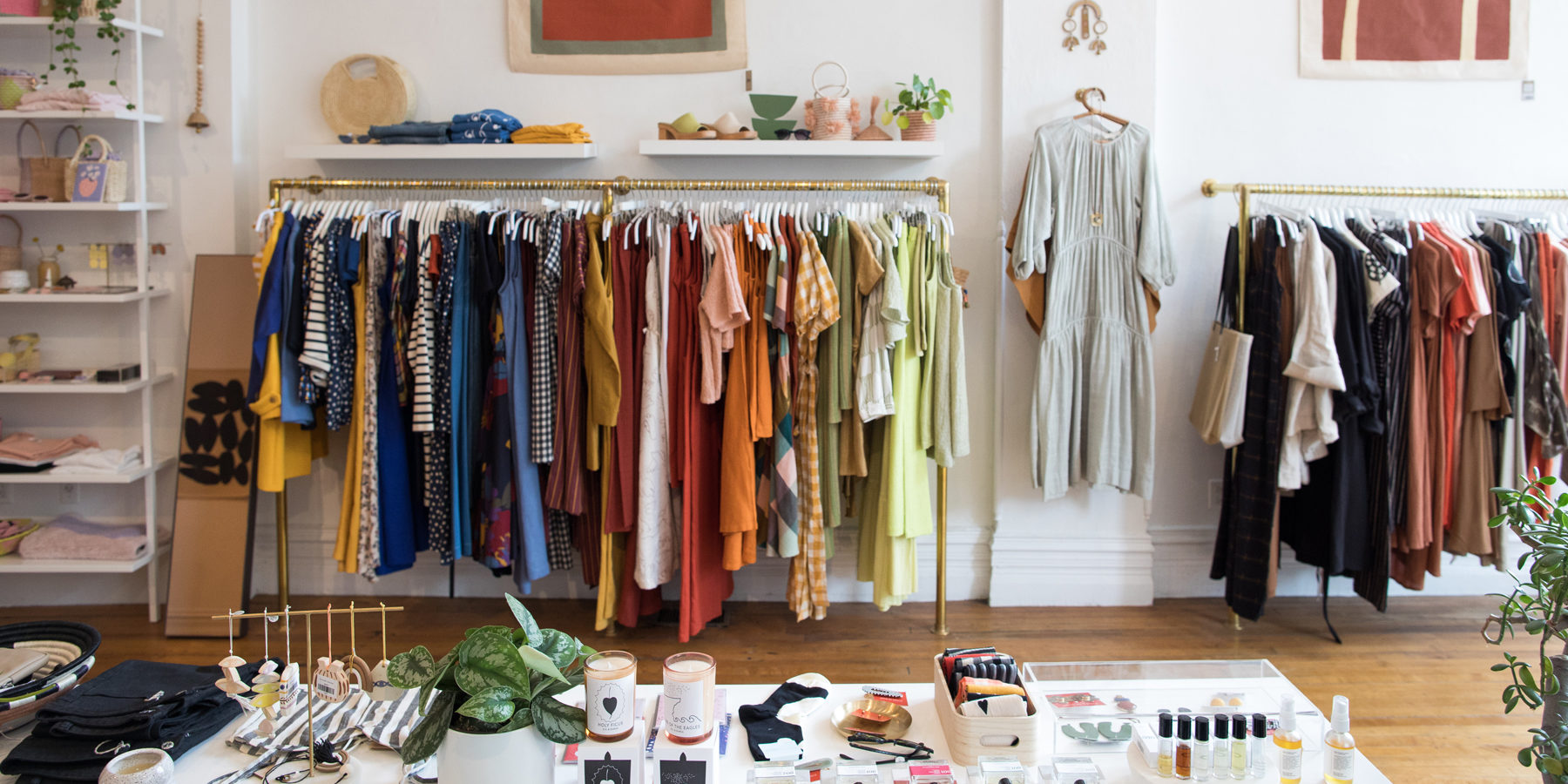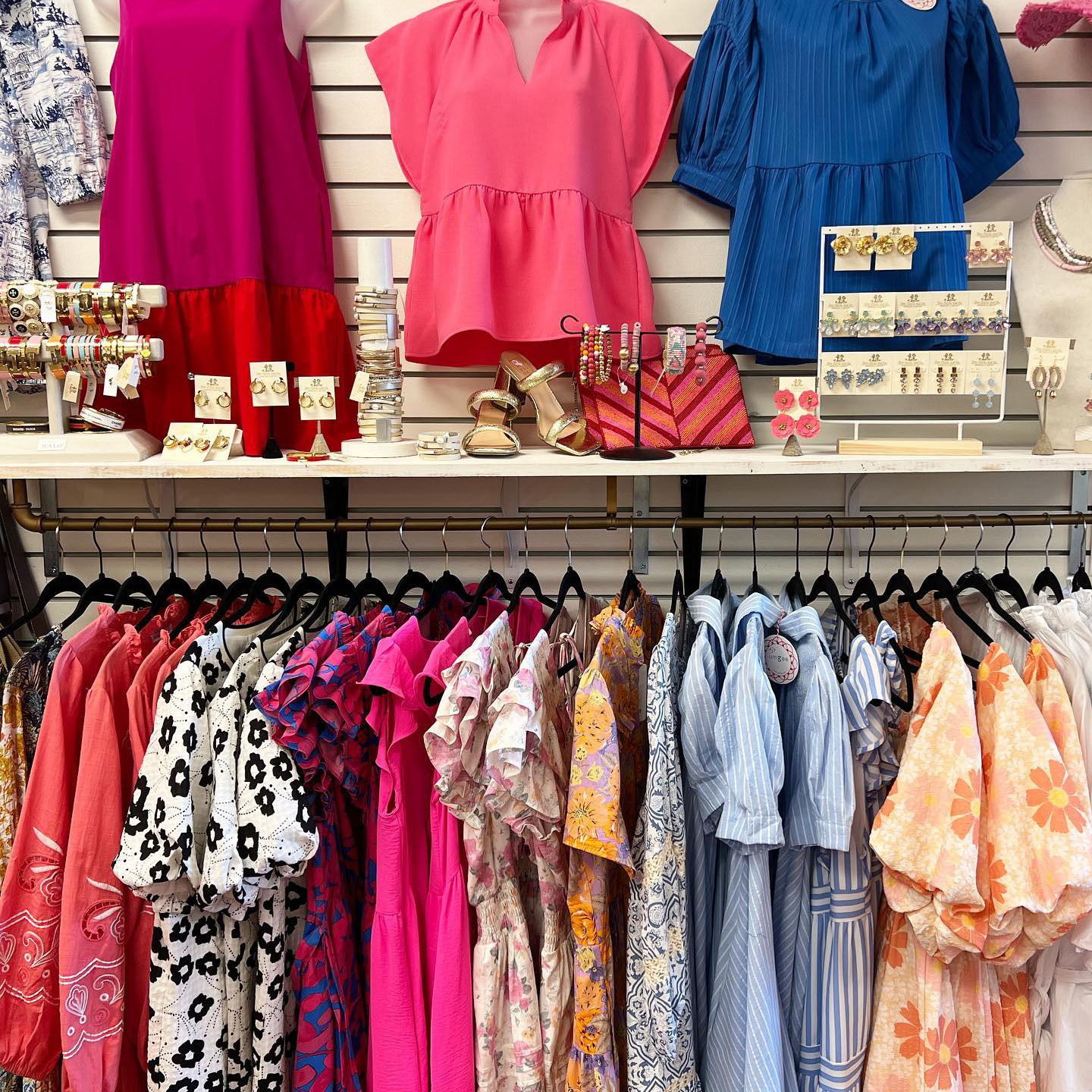Why Boutique Fashion is the Ultimate Option for Special Design
Why Boutique Fashion is the Ultimate Option for Special Design
Blog Article
Lasting Fashion: Just How Eco-Friendly Apparel Is Shaping the Future of Style
As the style sector deals with increasing scrutiny over its ecological influence, the surge of lasting style provides a promising choice that aligns design with eco-friendly obligation. boutique fashion. How does this motion genuinely influence the future trajectory of style, and what challenges exist in advance in its prevalent adoption?
Ingenious Sustainable Products
As the apparel industry faces its ecological influence, cutting-edge lasting products have become an essential remedy for reducing environmental impacts. Amongst one of the most promising materials are those originated from natural, renewable resources, such as organic cotton, hemp, and bamboo. These products not just minimize dependence on nonrenewable fuel sources but additionally minimize hazardous pesticide use and water usage. Organic cotton, as an example, uses significantly less water than traditional cotton and gets rid of the requirement for toxic chemicals, consequently preserving soil wellness and biodiversity.
In enhancement to plant-based products, advancements in biofabrication have actually brought about the growth of lab-grown textiles. Mycelium leather, originated from mushroom roots, provides a naturally degradable and versatile alternative to animal natural leather. Its manufacturing causes significantly lower carbon discharges and water usage, making it an extra lasting alternative for designer looking for to align with environment-friendly techniques.
Recycled materials are additionally obtaining traction, with polyester made from recycled plastic containers standing for a significant breakthrough. This development not only diverts plastic waste from garbage dumps and oceans but also minimizes power consumption compared to generating virgin polyester. Together, these products emphasize the potential for an extra lasting fashion market, leading the way for eco aware style and production.
Eco-Conscious Production
Building on the advancements in sustainable materials, the style sector is additionally re-evaluating its manufacturing procedures to better minimize environmental impact. Secret techniques include reducing water intake, minimizing carbon emissions, and eliminating harmful chemicals.
Another crucial facet is the decrease of hazardous chemicals generally utilized in dyeing and completing textiles. Eco-conscious producers are changing in the direction of plant-based dyes and waterless dyeing technologies, which not only secure local ecosystems yet likewise boost worker safety. Developments like digital printing decrease material waste and power usage, supplying a cleaner alternative to standard methods.
In addition, openness and traceability have come to be critical. With the improvement of blockchain modern technology, companies can currently supply thorough understandings right into their supply chains, making sure eco pleasant and ethical practices at each action. This transparency builds consumer count on and encourages brand names to keep high sustainability standards. As the need for eco-conscious products grows, manufacturers are forced to introduce, making certain that the future of fashion is both fashionable and sustainable.
The Surge of Upcycling
Upcycling, a transformative technique in lasting fashion, includes creatively repurposing discarded products right into new, high-quality items. This innovative strategy not just lowers waste but also lessens the demand for raw products, thereby decreasing the ecological influence of clothing manufacturing. By rebuilding and reimagining existing things, developers and style brands are able to instill originality into their collections while advertising view it now environmental obligation.

Furthermore, the upcycling activity has actually encouraged independent developers and small businesses, that frequently lead in innovation because of their agility and creative thinking. By maximizing the bountiful availability of extra materials, these entities add to a round economy, demonstrating that style can be both fashionable and sustainable. With upcycling, the industry takes considerable strides towards a much more mindful and responsible future.
Thrift Culture's Impact
The blossoming second hand culture significantly improves the landscape of lasting fashion, highlighting the significance of mindful intake. This social shift motivates customers to accept previously owned apparel, thereby reducing the need for brand-new garment manufacturing and decreasing ecological influence. Thrift shopping not only prolongs the lifecycle of clothes yet additionally reduces the carbon impact linked with production, transferring, and taking care of garments.
A crucial facet of thrift society is its democratization of fashion. By providing a large variety of designs from different ages at budget friendly rates, second hand shops make style obtainable to a wider audience. This ease of access promotes a feeling of individuality and imagination, as consumers mix and suit one-of-a-kind items to curate customized wardrobes without adding to the fast fashion cycle.
Furthermore, second hand culture advertises circularity in style, lining up with the concepts of a why not try this out round economy. As even more designers and customers welcome second hand culture, the fashion sector is forced to adjust, integrating sustainable practices to satisfy the expanding demand for eco-conscious alternatives.

Future Trends in vogue
Style's development is significantly shaped by technical advancements and sustainability-driven initiatives. As consumers come to be a lot more environmentally conscious, the market is reacting with groundbreaking developments that redefine the future of design. One famous fad is the increase of electronic style, where online garments can be put on in increased reality atmospheres, dramatically minimizing fabric waste. This change not just accommodates the digital-savvy consumer but additionally decreases the environmental impact commonly related to garment manufacturing.
Moreover, the assimilation of blockchain modern technology uses brand-new opportunities in transparency and traceability, allowing consumers to verify the sustainability qualifications of their clothes. boutique fashion. This makes certain responsibility in supply chains and promotes moral sourcing methods. 3D printing is yet an additional development that assures to reinvent manufacturing processes by making it possible for on-demand production, consequently Read More Here lowering excess stock and waste
Additionally, the growth of bio-fabricated products, such as lab-grown leather and plant-based textiles, offers sustainable options to typical materials. These innovations lower reliance on animal items and resource-intensive plants. As these innovations grow, they are poised to transform the fashion landscape, merging design with sustainability. The future of fashion, for that reason, exists in a smooth mix of technology, development, and ecological duty.
Conclusion
The transformation of the fashion market with sustainable techniques indicates a pivotal change towards ecological accountability. This development not just straightens fashion with environmental sustainability but also establishes a precedent for future patterns concentrated on duty and technology.
As the fashion sector encounters enhancing analysis over its environmental impact, the rise of lasting fashion uses a promising alternative that aligns style with eco-friendly obligation.As the fashion market grapples with its environmental impact, cutting-edge lasting products have actually emerged as an important service for decreasing ecological footprints. Together, these products underscore the capacity for a more sustainable fashion sector, paving the method for environmentally aware style and manufacturing.
Structure on the advancements in sustainable materials, the fashion sector is additionally re-evaluating its manufacturing procedures to additionally minimize ecological effect. boutique fashion.Upcycling, a transformative practice in lasting fashion, includes creatively repurposing disposed of materials right into new, top notch items
Report this page